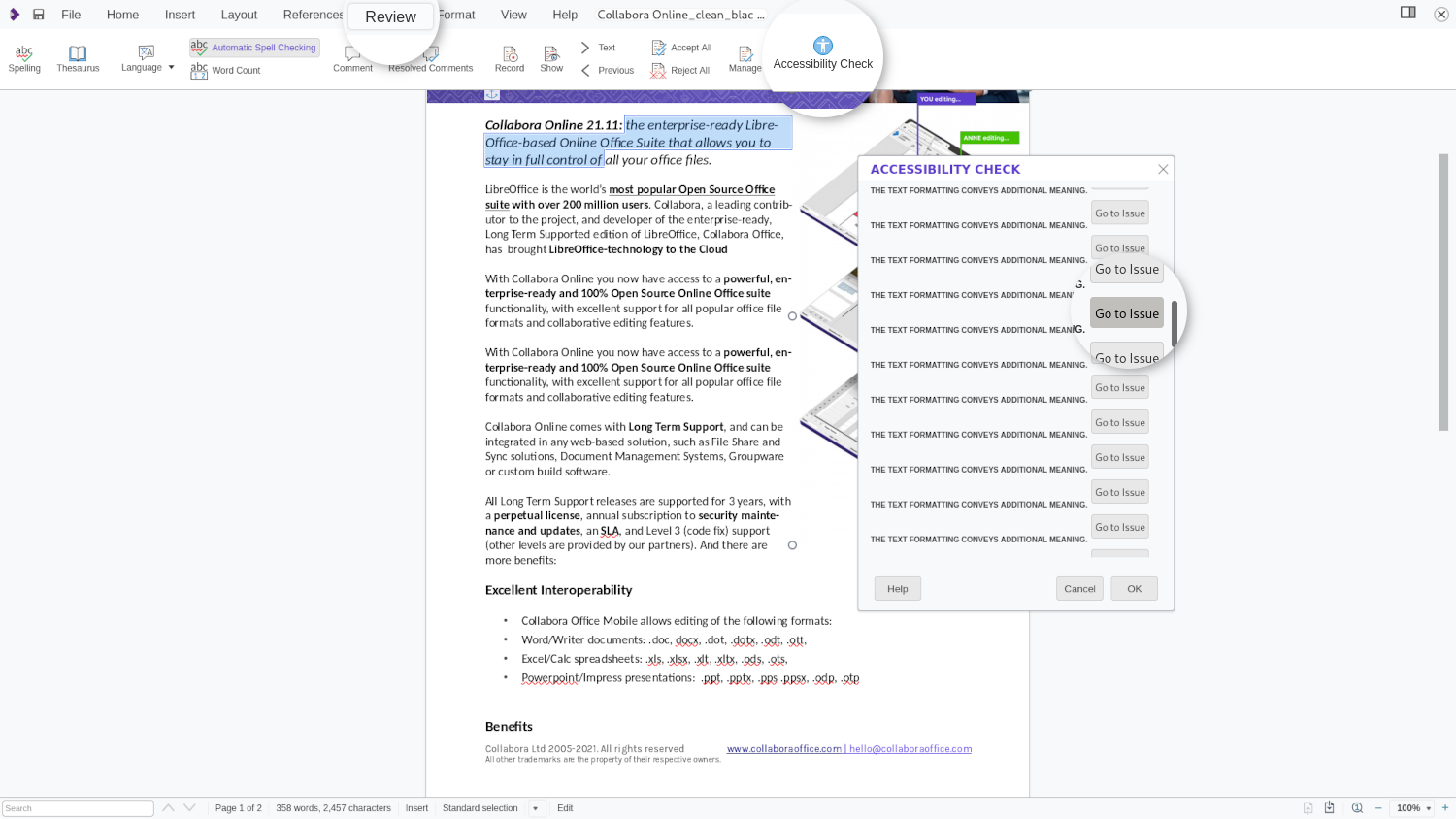

The accessibility checker will suggest for how to fix the problem you’ve selected.Ī Microsoft video demonstrates the accessibility checker in Word for Windows. Click an issue to highlight it in your document. In the pane that appears beside your document, you see a list of accessibility issues.The report is customized for each application. A report will open show any errors found. Click the button Check for Issues (next to Inspect Document) and select Check Accessibility in the drop down menu. (Or in the “ Tools” menu, click “ Check Accessibility.”) In Word, PowerPoint and Excel, the Accessibility Checker can be accessed as follows: Open the File tab. Click the “ Check Accessibility” icon.After clicking Review click on the Check Accessibility tab (3 from the left). At the top of the page, you will click on the Review tab. To begin, open the document /PowerPoint that you would like to check the accessibility of. It will tell you why and how to fix them, though. How to Check Accessibility in MS Word and MS PowerPoint.

So the checker is no substitute for knowing how to use Word.įinally, the checker only finds problems, it does not fix them. fonts, like Wingdings, where it should use images,.You’ll also have to check whether your page is using So you must check all images, even if the checker says they are OK. But it can’t tell if an image has inaccurate or badly-written alternative text. The checker provides Inspection Results, feedback about the importance of each item, and tips on how to repair issues. The checker will tell you if an image has no alternative text. Microsoft products have a built-in accessibility checker which can help the document author test the overall accessibility of the document. So you will also have to check headings yourself. If your headings are text made big and bold, not real headings, the accessibility checker won’t see a problem. But it will help you find and fix a lot of things. Note: You can get accessibility help (including the checker items) by selecting the Index button from the 508 Accessibility Help Tab of the Word 2010 ribbon.Microsoft Word’s built-in accessibility checker won’t catch everything. (B) The Accessibility Checker Pane Opens. (A) Select Check Accessibility from the File Tab: On the File Tab, in the Info Sub-Tab, select Check for Issues, then select Check Accessibility from the drop-down list (A) Select the Accessibility Checker Icon from the 508 Accessibility Help Tab of the Word 2010 ribbon. Then click the Check Accessibility button in the Accessibility button group to open the Accessibility task pane. Video on Adding Alternative Text in Word. You’ll have to ignore the checker’s warning for that image. docx format first, run the checks, and then save the checked / fixed document in the desired format. Instructions on How to Manually Check Accessibility in Word To manually check accessibility in Word, click the Review tab in the Ribbon. Unfortunately, if you use the accessibility checker built into Word, it may still say that the image needs alt text, even though you’ve applied one of the workarounds for older versions of Word. Here, you can review the errors and warnings returned. The results of the inspection will appear in the Accessibility pane to the right of the document. doc file format (e.g., for policy reasons), save in the. To use the Accessibility Checker, click the Review tab, then click the icon above Check Accessibility in the Accessibility group.

If you do not follow steps A and B above, the following error will show when you try to run the checker: If shown, make sure that it remains unchecked.

(B) When you save your document, the option to "Maintain compatibility with previous versions of Word" may be shown. (A) Before using the checker, you need to save your document from within Word 2010 in. Running the Automated Accessibility Checkerġ.


 0 kommentar(er)
0 kommentar(er)
